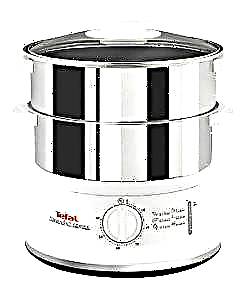If it is necessary to seal the joints, which during operation are constantly exposed to moisture, it is recommended to use silicone sealants, it is impossible to come up with a better tool. This material provides a waterproof and reliable connection.
In order not to make a mistake when choosing, it is necessary to familiarize yourself more closely with the varieties of such formulations, as well as study their characteristics and understand the scope. An important factor for consumers is also the cost, which sometimes affects the choice. You should not save, because in this case you risk acquiring low-quality goods, which will not only collapse under the influence of temperature and moisture, but will also cause mold and mildew.
The main varieties of silicone sealants

If you need a silicone plumbing sealant, then first you need to deal with its varieties. There are two main groups to classify silicone compounds for sealing:
- one-component
- two-component compositions.
The latter group is used in industry, while the former is widely used in construction and repair.
Classification by composition
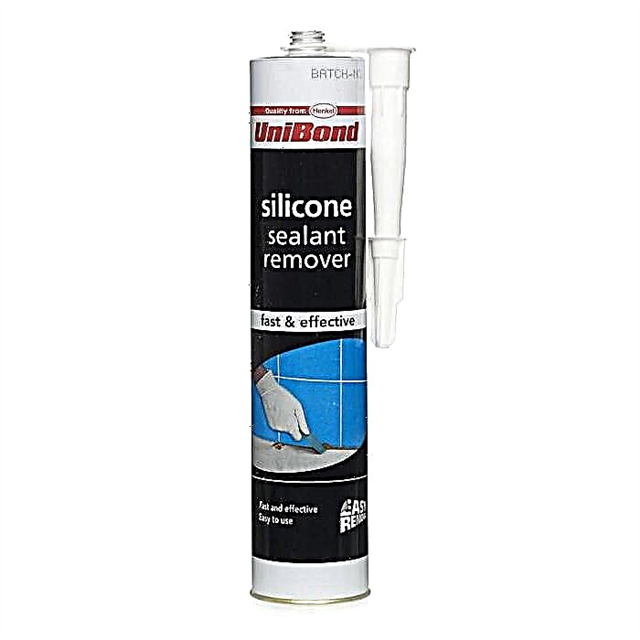
As for one-component sealants, they can also be divided by chemical composition, they are:
Silicone plumbing acidic sealant is made on the basis of acetic acid, as evidenced by the smell released during the hardening process. The compositions of this class are universal, and are inexpensive. Having examined the markings, you can see the letter "A". The disadvantage of such mixtures is their incompatibility with non-ferrous metals; their composition causes accelerated corrosion rates. Acid sealants are also incompatible with marble, as well as materials that contain cement, because in the manufacture of the latter, alkali is often used.
Silicone plumbing neutral sealant is made using ketoxime or alcohol, which replaces acetic acid. Thanks to these substances, the mixture is combined with surfaces of any type. Considering alkaline sealants, you can understand that they are made on the basis of amines; these mixtures belong to the group of special-purpose sealants.
Classification of silicone plumbing sealants as intended

Silicone sealants can also be divided by area of use. One of the representatives of such a classification is a silicone plumbing sealant used to seal threaded joints of water pipes, showers and sealing in bathrooms.
Glue-sealant, which is used for the manufacture of glass products, can be classified as a special category, among them aquariums should be distinguished. In addition to direct use, such silicone is resistant to loads and high strength. Sealants of this class are also classified by color scheme, transparent composition is considered standard, but quite often there is a need to use color or white sealant.
Description of Macroflex SX101 Silicone Sealant
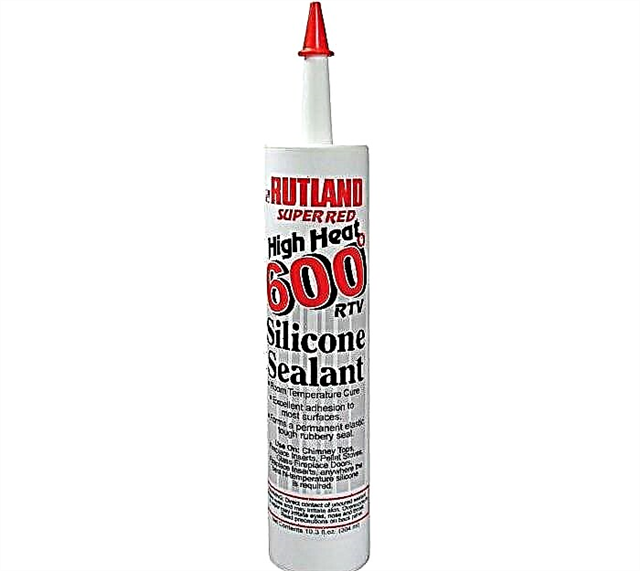
If you need silicone sealant, then you can pay attention to Macroflex, which provides high adhesion with most materials. During vulcanization, you will smell a specific odor. The mixture is moisture resistant, it contains antiseptic components and exhibits resistance to aging during operation.
Among the additional characteristics should be highlighted resistance to ultraviolet radiation. Use this silicone plumbing sealant, the characteristics of which you can find below, can be used to fill the gaps between the surfaces that will be used in a humid environment. The mixture contains fungicides that prevent mold, which makes the use of sealant especially effective in rooms with a humid environment.
Technical characteristics of Macroflex sealant

Silicone plumbing sealant, the technical characteristics of which should be known to you, if you plan to purchase this composition, should be applied at a temperature not lower than +20 ° C. The highest adhesion is achieved when working in temperature conditions in the range from +5 to +40 ° C. If you plan to carry out the work at lower temperatures than recommended by the manufacturer, it is important to ensure the dryness of the treated surfaces, they must be cleaned of ice and snow.
The size of the applied seam can vary in width from 6 to 30 mm. As for the minimum depth, it is 2 mm. If the layer will have a thickness ranging from 6 to 12 mm, then the depth should be approximately 6 mm. You can clean the tools after work with white spirit. The surface will dry in 15 minutes, which is true at 23 ° C and 50% humidity.
Vulcanization of the 2 mm layer will occur in 24 hours at the temperatures recommended above. The temperature resistance of hardened sealant ranges from -40 to +120 ° C. The modulus of elasticity is 0.44 N / mm 2, which is true at 100 percent elongation. Elongation at break is 102%. You may also be interested in elasticity, it is 0.43 N / mm 2 for a given composition. Makroflex will cost you 194 rubles. for 0.29 liters Typically, it is applied to glass, metal and ceramics.
Silicone sealant for pipes "Moment"

If you need a silicone white sanitary sealant, then you can pay attention to the "Moment", among its main properties should be highlighted:
- anti-mold substances
- antiseptic components
- ease of use
- high resistance to chemicals and atmospheric conditions.
You can use this composition both outside and indoors. During curing, acetic acid vapors will be released, so you should be careful, because they can cause respiratory irritation. The master should not work with the sealant indoors for a long time, it is important to ensure good ventilation. If such conditions cannot be created, then a protective mask should be used.
Technical characteristics of the Moment silicone sealant

Silicone plumbing sealant for water pipes can be transparent or white. Its specific gravity is 1.02 g / cm 3, the extrusion rate is 200 g / min. The three millimeter layer dries in one day, which is true at 23 ° C and 50% relative humidity. The surface will dry for a maximum of 20 minutes before tacking, and it is important to ensure the above conditions.
You can use the mixture at temperatures ranging from +5 to +40 ° C. Heat resistance of the joint is equal to the limit from -40 to +150 ° C. The tensile strength is equivalent to 1.6 MPa, with regard to hardness, it is more than 18 A. Elongation at break can be 450%. Silicone plumbing sealant for pipes should be applied to previously prepared surfaces, for this they should be cleaned and dried.
If the joint has an old sealant, this can reduce the adhesion ability of the new material, therefore it is recommended to clean the surface to the base. The described silicone sealant, the price of which is 103 rubles. for 85 ml, it is a universal composition and represents a single-component mass, which has a high degree of elasticity and is characterized by ease of application.
Conclusion
Silicone sealants are indispensable today when sealing joints in bathrooms, as well as sealing communication systems. Such mixtures are constantly improved by specialists of companies that supply such materials to the market. Sealants began to possess antifungal properties, as well as water-repellent characteristics. By applying such mixtures to the seams, you can no longer be afraid that the surfaces in the bathroom are covered with fungus and mold.
Scope and performance
Most often, such a sealant is used in the installation of plumbing: it helps to seal joints that water can get into, as a result of which mold will settle there. The tool is perfect for sealing the seams between the wall and the bathroom, shower, sink, toilet, countertop. High-quality sealants are used when laying or replacing water supply and sewage elements. When assembling pipes, they will exclude leakage and increase the service life of the assembly.

Since most sanitary sealants have antiseptic properties, they are suitable for installing window systems inside and outside buildings, helping to prevent mold and mildew. Also, any of the sealants can be used for other purposes:
- roofing works
- hardening greenhouses,
- masonry joints
- installation of vinyl cladding,
- mirror mounts.

A good sealant has the following qualities:
- high level of elasticity, the possibility of applying to deformable substrates, movable elements and parts of structures,
- resistance to water, steam, condensate, chemicals and UV radiation,
- excellent adhesion with ceramics, concrete, tile, stone, glass,
- tolerance of temperature differences,
- versatility and low consumption.
What problems does plumbing sealant solve?
Experienced plumbers recommend treating the issues of sealing the bathroom as seriously as possible. The risk of leakage is always maintained, and only the use of special formulations helps to reduce this danger. If there are holes between the wall and the bathroom, mold will probably appear in the room, and the leakage of the water supply system can threaten serious troubles at all. The most problematic areas are those where fittings or pipe branches are required: the use of sealant is especially necessary there.
 The use of plumbing sealant when connecting water pipes
The use of plumbing sealant when connecting water pipes
Sealant for water pipes and plumbing solves the following tasks:
- prevention of leaks caused by cracks, cracks or too strong water pressure,
- protection against temperature differences arising from the regular flow of hot water,
- maintaining important parts and assemblies in integrity, extending their service life,
- increased effect from the use of gaskets.
Sealant composition
Silicone sealant is made on the basis of compounds of silicon and various polymers, as well as additives:
- fungicides and antiseptics to provide antifungal properties,
- organic extenders to reduce viscosity and better flow into small slots, openings,
- fillers (silica and glass dust) to enhance adhesion,
- pigments to give a certain shade.

Sealants with other compositions may include acrylic, polyurethane, organic solvents and other components that provide the tool with reliable adhesion and sealing ability.
Release Forms
Many sealants are sold in plastic cartridges for a 290-360 ml gun. Also, there are products on sale in tubes of 50-100 ml - in conventional or equipped with a special piston like a syringe. For large-scale plumbing works, it makes sense to purchase soft sealant packages of 600 ml or more, for the extrusion of which special guns are used.

Basic composition requirements
To choose a really high-quality sealant, you must evaluate its compliance with the most important criteria:
- Suitability for a particular material. Some sealants are designed to work with plastic, others are suitable for metal substrates. There are universal compounds that are suitable for any plumbing tasks. Information necessary for the user is always on the package.
- Resistance to adverse effects. A good sealant should tolerate the effects of household chemicals, alkalis, ultraviolet radiation, high and low temperatures.
- Long service life. The tool must serve at least 5 years, when it comes to sealing pipes, and up to 3-5 years when closing the joints between the wall and the bathroom, other plumbing.
- Elasticity. The sealant should not crack from vibration, temperature changes, entailing the expansion and contraction of materials. If the elasticity is poor, a quick spoilage of the completed seam will occur.
- Polymerization time. If the repair in the bathroom is urgent, you need to choose the fastest drying compounds.
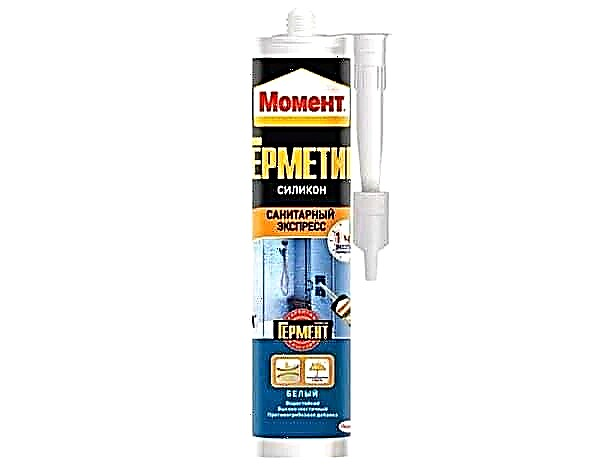
Linen Sealant
Wrapping threads and joints with linen thread is the oldest method of sealing, while the cheapest and short-lived. The principle of operation of the thread is as follows: after contact with moisture, flax swells and closes cracks, leaking joints. Conventional fibers cannot be used when working with thin-walled materials: after they swell and increase in size, there is a risk of a pipeline rupture in the joint zone. Also, flax thread is not used where the pipes of the water supply system are under high pressure: a strong water pressure will still lead to leakage.

Under the influence of moisture, the flax fibers weaken and collapse in a fairly short period of time, the joint will have to be serviced regularly. From constant dampness, metal parts will begin to rust and deteriorate. To reduce the shortcomings of natural flax, manufacturers began to produce a thread of improved modification, where the fibers are impregnated with paints and varnishes. Nevertheless, after some time, even such material begins to decay and becomes worthless, and the tightness of the joints is broken.
FUM tape
Ftoroplastovy sealant of materials, or FUM is a polymer tape wound on a bobbin, which is widely used in plumbing. It is made of PTFE-4, which is not subject to rot. The winding of the pipe joints with such a device gives more reliable protection against leaks than when using linen thread. The main properties of the FUM tape:
- tolerance of chemicals, ultraviolet radiation, temperature drops within the range of –70 ... + 300 degrees,
- metal corrosion prevention,
- elimination of friction of elements against each other due to smoothness,
- service life
- small thickness
- excellent ductility
- lack of toxicity.

FUM tapes also have disadvantages. It is not suitable for sealing large diameter holes. The reverse stroke of the nut or fitting after applying the tape is not permitted: it immediately deteriorates. In joints subject to vibration, complete sealing is impossible to achieve, as well as where temperature differences occur too often.
Plumbing thread
This material is prepared on the basis of artificial fibers and is impregnated with special compounds and antiseptics. The thread does not suffer from rotting, protects the metal from rust, allows you to reliably seal pipe joints, it does not break from the reverse stroke and allows the possibility of dismantling the system. Reliable sealing is obtained even with incomplete tightening of the joints. The cost of such a thread is high, so it is less commonly used in plumbing.
 Using a special thread to seal threaded connections to the contents ↑
Using a special thread to seal threaded connections to the contents ↑
Liquid sealants
Sealants in the form of a suspension are used independently or in conjunction with FUM tape, linen or plumbing thread. In pipelines that operate under pressure, it is better not to use them without additional sealing with threads. When drying, some products cause severe shrinkage, as indicated in the instructions.
Anaerobic Plumbing Sealant
Sealants from this group freeze in an airless environment, and in the presence of air retain their fluidity. After full polymerization, they do not change volume, reliably protecting joints and seams from leaks, while having high elasticity and minimal consumption. Excess surplus funds can be easily removed manually. Other advantages of anaerobic compounds:
- high adhesion with plastic and metal,
- the possibility of application for any plumbing work,
- tolerance of an aggressive environment, lack of interaction with surfaces due to chemical inertness.

The price of such sealants is quite high, but the quality is at a high level, and the consumption is minimal.
Silicone compounds
Such sealants are the most popular during plumbing. They can be used to seal any joints and joints, grooves and crevices in the bathroom, in the kitchen. Due to the tolerance of high temperatures, the products are even suitable for repairing heating systems, and their elasticity prevents them from cracking and crumbling on deformable substrates.
Depending on the composition, rubber silicone based sealants come in two types: acidic and neutral. The first ones contain acids that can cause corrosion, therefore they are not suitable for metal products. Neutral sealants are based on amines and do not react with metals, delicate materials, therefore they are used everywhere. To enhance the sealing effect, silicone products are often used in conjunction with reinforcing meshes.

Surface preparation
From the bases on which the sealant will be applied, it is necessary to remove any dirt, dust, oil stains, the remains of old compounds (mastics, grout). After mechanical cleaning of the surfaces, degrease them with alcohol, acetone or special solutions.
If you have to close up the gap between the bathroom and the tile with plumbing sealant, pour water into it before starting work. When the bathtub is filled and under load, the extreme parts are always slightly deformed, and the sealing joint will immediately take the desired position.

Sealing
Most sealants in tubes and cartridges are great for installation in a mounting gun. The tool helps to apply the funds more accurately, faster, in the strictly required amount. The procedure for working with plumbing sealant:
- Remove the cap from the tube tip.
- Cut the tip of the nozzle at an angle of 45 degrees.
- Put the tube in the gun.
- Slowly and gently pulling the trigger to apply sealant.
In order for the weld quality to be good, the sealant line must be continuous. It is recommended to start it from any angle. After the completion of the seal, it is required to form the seams correctly, which will allow to distribute the composition and increase the reliability of work.
Seam creation
If the sealing joint is small, you can give it the desired shape with your finger. You need to wear gloves, gently smooth the sealant, shifting the excess and directing it to where the layer came out thinner. With a significant area of the seam, smoothing is done with a narrow spatula, pre-moistened with soapy water.
Finishing
To complete the sealing, it is necessary to remove the excess composition that crawled out of the seam with a wet wipe. The initial setting time of the sealant is short, so you should act quickly, otherwise the entire seam may be damaged when removing excess. After a few days, carefully inspect the sealant layer. If defects, voids, cracks appeared on it, they must be repaired again.
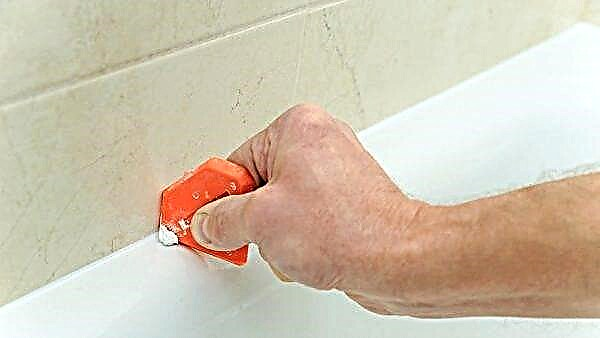
How to remove the product?
To get rid of fresh sealant stains, it is enough to wipe them with a wet cloth, a napkin, or wash them off with warm water and soap. After polymerization, you will have to use solvents: acetone, white spirit. Silicone sealants are well cleaned with special compounds, for example, Anti-Silicone, Foam-840. It is enough to apply a few drops of the product on the sealant layer, leave for 15 minutes, and it can be removed with a regular sponge.
Makroflex
Finnish sealants of this brand are widely used by masters. They are of high quality, excellent technical characteristics, environmentally friendly composition, long service life. For working with plumbing, the Makroflex NX-108 is well suited, which is useful for professional and domestic use.

"Moment"
In the "Moment" catalog you can find several products based on silicone or polymers that are suitable for working with heating pipes, sewers, for sealing joints in the bathroom. Sealants "Silicone Universal", "Silicone Neutral" from "Moment" are distinguished by good indicators of moisture resistance, elasticity, and durability.

Econ funds are allocated with low price and decent quality. The sealants of the brand are easy to use, can be applied manually or using mounting guns. These compounds are more designed for domestic use.

Tytan
The company's assortment includes polyurethane and silicone sealants for plumbing, as well as acrylic and bitumen based products. All products have high strength characteristics, have excellent elasticity, after drying, the seams can be painted.

Ceresit
The company produces a whole line of sealants with high adhesion to metal, plastic, and other plumbing materials. Means are characterized by versatility, good insulating ability, have antiseptic components in the composition.

In order not to know the problems with the operation of pipes and plumbing equipment, it is better to immediately purchase a reliable sealant and apply it in accordance with the manufacturer's instructions. In this case, the effect of complete sealing of joints and seams will be ensured, and there will be no need for repairs.
The properties
Plumbing silicone sealants are recommended for use during installation of the water supply. When assembling pipes, it is best to immediately use a sealant on the threaded pipe joints, since they are most often prone to leakage. The main types of sealants have such positive properties as:
- most compounds adhere very well to various surfaces,
- wide range of applications - there are universal sealants that can be used for any plumbing (sinks, toilet bowls, pipes),
- sealants easily tolerate large temperature differences,
- they are resistant to ultraviolet rays, in addition to self-adhesive tape,
- the compounds are very plastic,
- sealants have a long service life,
- they prevent mold and various harmful fungi.




Among the negative properties of sealants, it is worth noting the high toxicity of some compounds, which can be harmful to humans. They can spoil items in the interior, for example, tiles on the floor or wall. Such problems can be avoided if you work with the composition carefully and in protection, and any material should be laid on the floor and walls.

In today's market, manufacturers offer a wide range of different types of plumbing sealants:
- First of all, it is worth noting liquid formulations. The basis of such sealants is silicone. The essence of the liquid composition is to apply it to the required pipe section, where the sealant spreads and completely repeats the shape of the section. Then the composition hardens and forms a solid protective layer. When choosing such a sealant, you should pay attention to the brand, since not every composition can come into contact with hot water. They can be produced in cylinders or in a tube. And also it is necessary to take into account the high toxicity of the composition. It must be applied very carefully and do not forget about special protection.

- Adhesive sealant. A big plus of this composition is that it is completely transparent. This is an important criterion for people seeking to maintain the original appearance of water pipes, or it can be painted in any color. This composition can be used with high humidity. It perfectly comes into contact with any materials and is able to maintain its properties for a long time. Among the adhesive sealants, the compositions of the company have excellently recommended themselves Soudal and "Moment". Soudal is one of the most versatile and durable formulations in a variety of colors. It can be both transparent and white, black, beige, gray and others. The products of the Moment company have long established themselves in the domestic market as one of the most famous companies producing high-quality products for installation work.

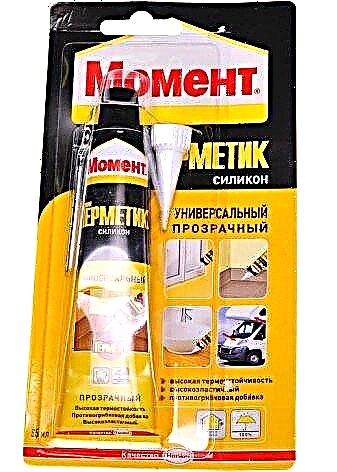
- Neutral Compounds. Typically, these types of sealants include rubber. They are flexible and can be used not only in plumbing works. The neutral composition has a high level of water resistance, good and reliable adhesion with various materials and a long service life. Unlike many other formulations, they are not intended for further coating with paint.


- Acid Compounds. A big advantage of such compounds is their low cost relative to other sealants. And also when using such a sealant, mold or fungus will never appear, since acid kills various harmful bacteria. But such materials are quite toxic and are not recommended for use on thin pipes, and in no case in direct contact with drinking water. When installing pipes with such a sealant, it is imperative to use protection and avoid contact with exposed skin.

- One of the sealants is also self adhesive tape. This option is perhaps the most popular. It is very convenient to use the tape in all types of pipes and sewers. It is not susceptible to corrosion and does not lose its properties with temperature changes. The tape itself consists of rubber and a protective layer of aluminum film. This type of sealant is one of the most reliable hermetic materials for pipes. Among the negative sides of this material, it is worth noting its changes when exposed to sunlight. Therefore, it is better to use such a sealant on pipes inaccessible to sunlight.


- Among the sealed materials can be noted dry flax. This material has been used for a very long time. But modern types of compounds are several times better than flax, which is subject to rapid decay. Therefore, the technical characteristics of this type of sealant are much less than the current ones. It can be used as temporary insulation for a damaged pipe section.

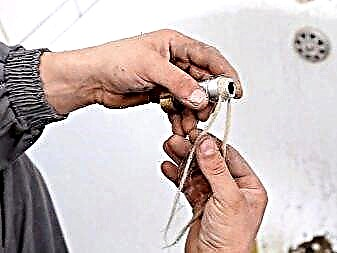
How to apply?
Before applying any sealant directly to the required pipe section, it should be carefully prepared. Usually the surface is cleaned of old paint or rust with a brush with metal bristles. It is also recommended to degrease the area with a small amount of gasoline. After that, it is already possible to apply the sealant itself. If silicone tape is used, then it is wound on a threaded connection, and if there is any liquid sealant, then it is applied to the site using a special gun for cylinders. It is important to remember safety and not to touch the fresh layer of the composition with unprotected hands, because some may contain acid. For the formation of seams, it is best to use a spatula and work with gloves. For drying of various compositions, different times are required. After an average of 20 minutes, the silicone sealant begins to harden.


How to choose?
When choosing a sealant, a number of factors should be considered:
- A situation may arise when the pressurized composition will be in direct contact with drinking water from the tap. In this case, it is worth paying more attention to the choice of material. Such a composition must be certified for contact with drinking water.

- It is necessary to take into account the material on which the hermetic composition will be applied. For pipes made of plastic, metal or a combination of such materials, you can use a sealing thread designed for a particular material. There are threads that are intended for use in combination pipes. For such materials, you can use a gel sealant that can withstand large temperature differences. Most of these gels are usually white.

- Do not forget about the size of the thread in metal pipes. For fine threads, you can use the same thread or gel, which has a brown color. For large threads, liquid formulations may be used.
- Carefully inspect the packaging of the liquid sealant. It should not be any damage. Of course, the expiration date should also be appropriate. Spoiled composition completely loses its properties.

Silicone plumbing sealant is a very useful tool for safe and reliable operation of the pipeline. Today, there are so many different compositions, among which you can choose the desired option.
An overview of the characteristics of silicone sealants, see the next video.
The choice of transparent sealant
Before buying, decide for which surface you use it, because the choice of type of product depends on it
Having carefully studied the label, pay attention to what surfaces it is intended for, which components are part of the product. Quality rubber silicone can't be very cheap
Manufacturers add fillers to cheap analogues that reduce the properties of silicone.
Sealant for outdoor use lasts a long time. During all this time, it retains ductility, tensile ability and resistance to moisture. Silicones can not be painted, but there are places where they are simply not replaceable (gluing glass). The consumption of the product corresponds to the size of the seam into which it is applied. If the gap is too deep, first use a cord to seal.
Choose a high-quality transparent sealant, carefully read the composition and application, then the work will pass quickly and easily.
Types of sealants used and rules for their application
The construction industry produces sealing materials designed for sealing joints of sewer pipes. It:
Sealing self-adhesive tapes. Strips 3-15 cm wide are made from bitumen or rubbers. They can be reinforced with a fiberglass mesh, covered with a protective layer of aluminum foil. They are used to strengthen coupling joints, tie-ins or cracking joints in communications.
- Polymer sealants. Viscous compositions of silicone rubbers, acrylic or polyurethane harden at room temperature. They have heat and water resistance, good adhesion to the pipe material. Acidic substances that smell like vinegar are not recommended for working with metal, as they cause corrosion. More expensive neutrals are safer in this regard.
- Portland cement. Clinker, calcium silicate and gypsum powder quickly hardens when combined with water. Modifiers are added to the mass to increase elasticity. It is used to seal cast iron structures.
- Sulfur technical. Inexpensive material is released in the form of powder or clods. It is ground and mixed with finely ground kaolins, heated to a temperature of 150 ° C. In molten form, they are poured into the socket of cast-iron pipes.
- Bituminous sealants.Compositions with rubber or polymer additives are applied hot or cold. They have high elasticity, water resistance, but become brittle at temperatures below -35 ° C.
- Thiokol sealants. Heat-resistant, elastic and durable compositions are very unpretentious, have high adhesion to plastic, metal or concrete. Suitable for gluing pipe joints of various materials. The glue base is mixed before work with a hardener and a vulcanization accelerator.
Sealing tapes are designed for processing joints from the outside. Remove the protective film, slightly pulling, impose overlapping layers. Wrap the pipe above and below the joint by 15-20 cm. Previously, the surface is cleaned of dirt and dust to ensure a snug fit of the strip.
Pasteous bituminous, polyurethane or silicone sealants are applied to the inner edge of the socket, connected to another part, and left to completely harden. Most often, such compositions are used in the assembly of the junction of cast-iron and plastic pipes. The viscous layer ensures tightness of the interface, compensates for the varying degrees of thermal deformation of the two materials.
Specifics of silicone adhesive sealants
The material provides good insulation from moisture, while gluing surfaces. Suitable for products from:
Silicone-based translucent formulations will not be visible on the surface
Advantages of bonding sealants:
- invisible on the surface due to the translucent structure,
- perfectly stretch and contract
- dielectrics
- heat resistant
- glue any combination of materials,
- resistant to the effects of mechanics,
- Do not ask for specialized surface treatments.
The composition includes silicone rubber, pigment and additives - fungicidal, thixotropic and plasticizing, as well as a catalyst.
3 Characteristics and use of neutral sealants
This type of sealing means is a composition based on silicone rubber. The consistency is viscous, viscous, hardens during contact with moisture in the atmosphere. The drug has high elasticity. Due to this, it can be used in the processing of compounds that may undergo deformation. In addition to pipe processing, it is used in the field of finishing works.
Neutral formulations do not have an aggressive effect on the surface, but cannot be painted.
Advantages of neutral sealants:
- have a high degree of adhesion to all building materials,
- absolutely waterproof
- not afraid of ultraviolet - can be used in open sunlight,
- resistant to organic solvents
- not exposed to aggressive environments of acids and alkalis,
- remain effective in the temperature range from –60 to +300 degrees,
- durable.
The main difference from acid compositions is that they do not have an aggressive effect on materials. The disadvantage is that due to the water-repellent composition, the sealant cannot be coated with paint. If the situation requires masking the seam with shading, choose the color option.
Characteristics and use of neutral sealants
This option of sealing means is a composition based on silicone rubber. The consistency is viscous, viscous, hardens during contact with moisture in the atmosphere. The drug has good plasticity. Because of this, it can be used during the processing of compounds that may undergo deformation. In addition to pipe processing, it is used in the field of finishing works.
Neutral compositions do not provide an aggressive effect on the surface, however, it is not possible to paint them
Pluses of neutral sealants:
- have a large degree of coupling with all materials for construction,
- completely not afraid of water,
- not afraid of ultraviolet radiation - can be used under the open rays of the sun,
- resistant to organic solvents,
- not exposed to aggressive environments of acids and alkalis,
- remain productive in the temperature range from –60 to +300 degrees,
- durable.
The main difference from acid compositions is that they do not provide aggressive effects on materials. The disadvantage is that due to the water-repellent composition, the sealant is not possible to paint. If the situation requires masking the seam with shading, select a color option.
How to seal a joint of plastic and cast iron pipes
If a pig-iron sewer pipe flows, the owner of the house can replace the damaged segment with a piece of pipe from the same material. But there is an alternative option in the form of plastic products. However, in this case, it is necessary to know the nuances of how to seal the sewer pipe, which consists of components that differ in their characteristics.
To achieve a good result, first of all, you should buy rubber or polymer adapters. Having done this, you can get to work. First you need to clean the cast-iron bell from rust and dirt. To improve the level of tightness, it is recommended that it is then degreased. Next, a layer of silicone sealant is applied to the inner surface of the bell. The same operation must be performed on the outer surface of the adapter pipe. Then this structural element is carefully inserted into the bell. Upon completion of the polymerization process, the pipe joint with the plastic part is connected to the pipeline. If there is no spare pipe, the best solution to eliminate leaks would be to use a metal clamp.
For the clamp to perform its task, it must be of suitable diameter
You can purchase such a mount already with a rubber seal, or you can cut a piece that is suitable in size yourself. A clamp is generally a universal solution to many problems associated with pipe repair.
You should not discount the easiest way to seal the joints of sewer pipes: sealing them with paint. Although this method is rarely used, it also gives good results. Moreover, on all types of sewer pipes. It is performed in two stages: first, the bell must be hammered with a cloth and filled with paint. Then, using a screwdriver, the contents of the bell are well rammed. After solidification of the resulting mass, you can begin to operate the repaired drainage system.
The following factors influence the choice of a suitable sealing variant for sewer pipes: the location of the pipeline and the material from which it is made. But know: you can do this work with your own hands. To do this, you just need to clearly set yourself the task, carefully study the instructions for using this or that material and follow the tips of common sense.
Sealant for pvc sewer pipes is a special composition that protects joints from leakage. In addition, it provides ease of installation and helps to cope with emergency situations. In this article, we consider what types of sealing substances are for PVC pipes and ducts made of cast iron.
Features of sanitary sealants
Sanitary silicone sealant is a homogeneous paste-like composition made on the basis of silicone with the addition of polymers and additional substances. Such compositions are designed to fill and seal joints, crevices, cracks, pits, chips, to prevent them from filling with dust, dirt, and also to protect the material from air and water.
Among the whole variety of sealants, it is silicone that is the most popular in everyday life. Compositions based on silicone rubber are considered universal and are most often used in the toilet, bathroom, kitchen, because building materials there are exposed to various damaging factors:
- high humidity
- temperature differences
- mechanical stress.
In addition, sealants help maintain proper hygiene in these rooms, which is why they got their name. Such products do not rot, are not afraid of water, mold. The main difference between a sanitary sealant and a simple one is fungicidal additives - substances that destroy fungal and other organic deposits.
Advantages and disadvantages
The use of various thread sealants has its advantages and disadvantages that must be borne in mind before proceeding with the sealing procedure.
The advantages of using thread sealant are a great many:
- It retains its properties, despite significant temperature fluctuations. This does not affect the tightness of the joint - it remains unchanged.
- Resistance to mechanical influences. It will not work to unscrew the nuts. Significant efforts will be required to do this. If water is supplied under high pressure, nuts without a sealant can loosen due to vibration in the pipes. This will not happen here.
The ability to penetrate the smallest cracks and crevices. Thanks to this, a high fit of the parts to each other and, therefore, complete tightness is achieved.
Low consumption. To process the thread, very little material is required, so one bottle purchased is enough to process all the pipes in the middle apartment.
Ease of use. Intuitively how to use sealant
It also comes with detailed instructions with all the characteristics, precautions, and recommendations for use.
In addition to all these advantages, sealants have disadvantages:
- In order to disengage the pipes (for repair, for example), excessive efforts will have to be made. Sometimes dismantling is generally not possible because a strong fixative sealant has been selected. Then the pipe becomes monolithic. The only way out is to break the pipe.
- Compared to traditional materials, sealant is quite expensive. If you take a remedy from a good eminent manufacturer, the price tag will be even higher.
- It will be necessary to wait until the sealant has completely dried out. Hardening time depends on the specific brand. However, until the joint “seizes”, it will not be possible to use the pipe.
As you can see, there are only a few shortcomings, so the vast majority of professional builders agree to use only industrial-grade sealants to seal the threads, and not improvised materials that came to us from the Soviet Union.
Using sealant in an old bathroom
Silicone paste can be used for partial repair of an old toilet bowl, the joint of which with the floor has already lost its strength. To do this, proceed as follows:
- prepare the base - clean from dirt, rust, plaque, remove the old sealant if possible,
- degrease the surface
- purchase sealant in a cartridge, insert into a construction gun,
- pass the tool over the seam so that it goes under the device as deep as possible, making the line strictly continuous,
- remove excess composition with rags,
- after a few minutes, proceed to the formation of the seam with a rubber spatula (you can also use your hands in rubber gloves) - the goal is to align the silicone to the level of the surface to be treated,
- after solidification of the drop and unevenness of the seam cut off with an office knife.
It happens that the tightness of the toilet cuff is lost, which is superimposed on the sewer pipe. It can also be replaced with sealant. To do this, remove the adapter with a cuff from the rubber pipe seal, also remove the latter, clean and dry everything. Buy new parts: gasket, adapter, cuff. Apply silicone sealant to the pipe, insert an elastic band, then grease the cuff with the same composition and fix it in place.
Tips
Practical tips for sealing the room will help to quickly and accurately carry out all the work. As practice shows, with modern means of waterproofing to do this is not difficult even for a person who first picked up a tube with a sealant.
- At the first stage, it is necessary to prepare the front of work. Before sealing, it is necessary to clean the surface of building dust, dirt and foreign objects. To fill the joints between the bathroom and the tile, you need to type in the first water, which will ensure its working condition. It is from this position that the sealant will be more convenient and more rational.
- The next step on the path to waterproofing is directly sealing. First you need to open the tube with a pre-selected tool. Trim the end of the nose at an angle of 45 degrees. We insert the tube into the mounting gun. If it was not at hand, craftsmen recommend using any piston: be it a hammer handle or any other durable heavy object that will help squeeze the sealant to the surface. Of course, such a path is more labor-intensive and time-consuming, but it also takes place.
- Proceed with the application of the required layer of sealant. It should be remembered that the line must be continuous, of the same thickness. If something went wrong, it is best to immediately take measures to remove the incorrect site. Otherwise, after drying, additional agents such as a solvent will have to be used.
- The third step involves the design of the insulating seam itself. This is done with a small spatula. This process can also be carried out with your own hands, having previously protected your hands from contact with the silicone mass with gloves. So, with the chosen tool we cover the seams so that they turn out to be smooth and neat. For greater productivity and practicality, professionals are advised to moisten the spatula with soapy water before each contact with the sealant.
- At the fourth stage, the final cleaning of the working surface from excess silicone, dust, water and other things is carried out.
See how to use sealant properly in the next video.
Why seal a threaded connection
The presence of a thread in itself is a guarantee of a strong joining of two parts. But in some cases, without additional sealing, the unit will not serve reliably. An example is plumbing equipment, sewer pipes, radiator connection points: without a good seal, joints can leak. The reason is the regularly occurring temperature differences at which metal and metal-plastic pipes expand and contract.
Similar phenomena occur with constant vibration experienced by water pipes. In addition, with prolonged contact with water, even the highest quality metal begins to rust. As a result, the connection loosens, the thread loosens, leaks occur. It is possible to deal with such problems by tightly tightening the bolts and washers, as well as by applying a special polymer composition.
Sealant for threaded connections will minimize the risk of leakage, reduce the negative effects of vibration, contact with moisture, temperature extremes. Anaerobic sealant is best suited for this purpose, although some plumbers still use FUM tapes or other types of seals.
Characteristics of Acid Sanitary Sealants
This type of sealing compounds has in its basis silicone silicone polymeric materials. As a solvent, vinegar acid is used. Pros:
- have a lower price than neutral compounds,
- contain fungicides that inhibit the growth of mold, fungi and other types of microflora,
- water resistant
- not afraid of ultraviolet light,
- can be used at temperatures from –60 to +150 degrees,
- long serve.
Homemade molding silicone from sealant and silicone oil.
Acid sealants are not prone to biocorrosion, due to this, they are most suitable for a water supply system
Acidic plumbing silicone sealant is very often used to treat water pipes, because it does not lend itself to biocorrosion. The minus of the material is its acid component, which can damage “delicate” surfaces, for example, amalgam, multi-colored metals. Not suitable for places where contact with food is possible, as has biocides.
What is silicone sealant?
Previously, various putties were used to eliminate seams, seal holes, crevices, and other similar jobs. They had only a temporary effect, quickly washed off, lost aesthetic qualities, and the final result immediately after their application was not very pleasing. Today, silicone sealant is used for all these purposes. It allows you to create a durable, waterproof layer that lasts for many years, does not collapse, looks beautiful or even imperceptibly.
Important!
Silicone sealant is a material for creating a durable, waterproof layer, insulating joints, gluing surfaces and sealing joints, which has good resistance to external influences
Photo of silicone sealants
Cast iron piping
Sealant for cast-iron sewer pipes can be used in different ways. For example, a tape.
A tape for sealing cast iron pipes is laid for comprehensive protection. Its use makes it possible to finish not only joints, but insets, turning angles, bends, plugs, etc.
Sealing cast iron products with tape is performed as follows:
- Preparation - cleaning of areas from dust and their drying.
- The tape is stretched in a stretch around the circumference of the intended joint. This avoids the formation of bumps.
- It is wound in turns, with an overlap.
- Ultimately, the connection is under a pair of sealing layers.
Traditional sealing method
Its essence is as follows. I fill the pipeline by two-thirds with a tarred plait. The remaining place is poured with a thick cement mortar.
Often the material is replaced with asbestos cement. But, it can only be taken in high quality. The bookmark itself takes a lot of time and effort.
For sanitary sealant, these qualities are called ideal. Another important advantage is the property not to let moisture pass. Now the fluid will not be able to leak from either pipe into it.
For the proper use of a self-expanding agent, the workpieces are cemented and the compound is poured with a mixture
With these actions, it is important to maintain the correct ratio of ingredients. It equals five parts of water to two parts of cement
Cable duct
Sealing cable ducts requires a special approach. For such tasks use special mastic inserts.
When laying cable ducts, collapsible mechanical seals made of plastic are used. They are designed to provide waterproof cable network.
Such systems of collapsible elements are used in wells, collectors and entrances to premises. These sealing devices are easy to mount and remove with your hands or simple tools.
It is not necessary to apply any additional sealants. Components are selected using special tables, which set forth all sizes.
They are placed on the outside of the workpiece with a cable passing through it. They are also placed on pipe products where there is no cable yet.
Storm sewer routes
Sealing stormwater is no less important than in any other system. Proper arrangement of storm sewers makes it possible to fully utilize recreation areas, car parks, paths.
The objects of water diversion are waterproof surfaces:
Water flows down them into a point or line receiver. Then it is in the tank. The features of such a system are volley discharges, the absence of a stable flow in the middle of the highway. They also have no organic contamination.
The sealant in this case is necessary for the network to function without leaks. The concept of correct sealing of storm sewers includes:
- The right type of building material.
- Precise sealing action.
When working with plumbing sealants, you must understand that this task does not tolerate an inattentive and careless attitude.
Even a minor error can lead to irreversible consequences that are formed as a result of poor-quality junction.
In the end, everything will have to be redone anew, and this is unnecessary financial investment and time spent.
The money spent on his services will fully justify themselves as a reliably serving storm network. Only recommend recommending a trusted company, where there are highly qualified specialists.
The work of such masters is of a high level of quality, and there will be no problems in the form of emergency repairs.
The main thing in this matter is the correct approach to the work itself (sealing). This will determine the further reliable functioning of the sewer pipes and the system as a whole.
Mounting Methods
The main point in the operation of the sealant is the correct choice of its type and chemical composition
When using plastic pipes, it is important that the chemical elements of the pipe and sealant do not react and do not destroy each other
Here is the procedure for sealing the pipeline:
- Clean, degrease and dry the joint. When using liquid formulations it is convenient to apply them with a mounting gun.
- Connect the connecting elements of the pipeline to each other and secure from possible shear.
- Apply sealant to the joint and withstand the right time. Next, remove its excess with a rag.
When sealing the joint of threaded fittings using a thread, you must have certain skills. It is necessary to carry out its winding very carefully, if it does not fall into the groove, but onto the top of the thread, then it can break it when twisting.
When using FUM tape, the work will be simple. The plastic tape stretches during winding and forms a tight joint. But she has her flaws. It does not tolerate vibration of pipes: such a connection can weaken and leak. The pipe at the junction must be fixed to the wall, preventing it from sagging and moving.
Flax or tow is chosen for pipes of large diameters. For the strength of the compound, they are coated with a special paste or oil paint. When using paint we get a joint, which is then difficult to disassemble. The paste becomes soft if you warm it.
A rubber bell is used to connect the sewer pipes. He pulls on the ends of the pipes and fits them tightly. A mixture of cement and asbestos fiber can serve as a sealant for sewage. They are mixed with water until a thin dough is obtained and poured into the bell, where the pipes are connected.
How to apply a sealant. Step-by-step instruction
Silicone based sealants are available in 310 ml plastic tubes. Instructions for use silicone sealant glue? Before using the sealant, it must be prepared:
- The tip of the tube is cut first.
- Next, put on the cap that comes with the kit.
- After that, the distributor is cut at the desired angle.
- Then the prepared sealant is inserted into a special gun. Then it is fixed in the tool.
Starting work, you should insert the cap of the tube into the joint and, pressing the trigger of the gun, evenly distribute the seal on the base to be treated.
Important! The pressing force when using the tool must be compared with the speed of its movement along the joint. This will make it possible to get a smooth and aesthetic seam as a result.
The sealant should not be saved. All cavities of the gap must be filled. Otherwise, when the sealant hardens, cracks may appear between the base and the sealant.
Often a filled joint does not work out absolutely even. In this case, do not wait until the seal has dried. It is necessary to remove its excess and trim the seam with a moistened rubber spatula. You can use a small plastic scraper for this.
Professional builders often level the filled joint with a finger dipped in a solution of laundry soap.
How to remove from the surface
The silicone sealant is flexible, but nonetheless durable. It adheres firmly to the base. It is not easy to tear off the seal from its surface. The material has to be cut by inserting a sharp knife between the bonded surfaces.
Therefore, it is necessary to work with silicone sealant carefully.
But what if, nevertheless, there was a need to remove the frozen seal from the base? When the silicone layer is quite thick, removing it is relatively simple. It should be pry off with something and just rip off the base.
A different situation arises if you have to remove a thin layer or stains of inaccurately applied material. It is difficult to remove them, especially when you need to maintain a tight joint.
In this case, you should carefully separate the layer to be removed from the one that needs to be saved. To do this, cut through the material on the problem area with a sharp knife, and erase unnecessary residues with your finger
This method is well suited for a fresh sealant that has not had time to gain 100% strength.
Aged material is removed only with the help of chemical compounds that soften it. Manufacturers produce many cleaners that can help remove old sealant. The best of them:
- Silicone Remover. It is a universal cleaner for all surfaces.
- Sili-kill from the Dutch manufacturer Den-Braven. After its use, the silicone is simply removed with a sanitary napkin.
- Permaloid-7799. This product is designed to remove silicone sealant from metal substrates and painted surfaces.
- Permaloid-7010. It serves to remove the seal from plastic, including PVC, acrylic, polystyrene.
Purpose, composition and properties
In addition to the base - silicone, other substances are present in the sealants. Plasticizers that enhance elasticity, thixotropic components are introduced here. The latter give the structure special properties that allow it to solidify at rest and liquefy when moving, they help the sealant not to drain from vertical bases.
Also, sanitary sealants must include:
- anti-mold additives (fungicides),
- hydrophobic substances
- adhesion primers,
- catalysts and vulcanizing components,
- pigments
- fillers.
Sanitary sealants can be used when laying sewer pipes, processing joints and cracks, window frames, when filling cracks. They are widely used in the installation of kitchen equipment, plumbing, for insulation during repair, electrical work.
Using sealant, you can glue the tiles, grout tile joints. It is suitable for most materials used for repair and construction.
Restrictions on the operation of sanitary silicone sealants also exist. They do not adhere well to fluoroplastic, polycarbonate, polyethylene, so these materials require the use of a different type of sealing compounds. Also, many sanitary sealants are not suitable for products in contact with water, food related to animals (for example, for aquariums). They contain additives that make the product harmful if it gets directly into the body. For utensils and other kitchen utensils, it is worth buying special compounds marked with food safety.
Any sanitary sealant is moisture resistant, which means it is well suited for the bathroom. Due to the presence of special components, sealants are resistant to mechanical stress, UV radiation, they withstand frost and heat, temperature changes, are not afraid of precipitation, therefore they are suitable even for outdoor work (for example, to seal facades or greenhouses). Good sealants do not shrink at all or its rate does not exceed 2%.
Each sealant dries for a different time period, although drying of any of them depends on humidity and temperature in the room. For example, if the temperature is room temperature, humidity is about 60%, then the surface film is formed in 5-15 minutes, complete curing occurs in a day. Thick, large seams dry longer - in 2-4 days.
Advantages of silicone sealant
The silicone sealant contains silicone polymer and additives that increase its strength, adhesion and accelerate the polymerization time. Silicone is mainly used for internal sealing of joints, its advantages are the following factors:
- High adhesion of the material with metals, plastic, ceramics, glass, enamel, stone.
- The material provides a long-lasting elastic joint without cracks.
- The temperature range of silicone is from -50 to +180 C. High-temperature domestic varieties are able to work at temperatures up to +260 C. and for a short time up to +350 C.



